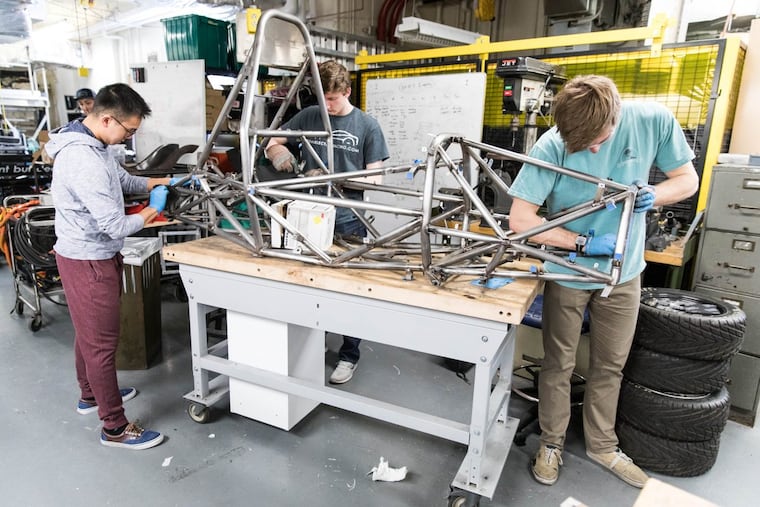Penn's electric race car team seeks fourth title in four years
To build a race car that can round corners at high speed, University of Pennsylvania students have come up with a radical redesign.

To build a race car that can round corners at high speed, University of Pennsylvania students have come up with a radical redesign.
